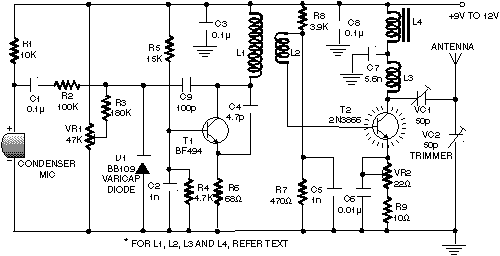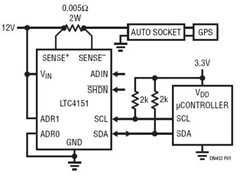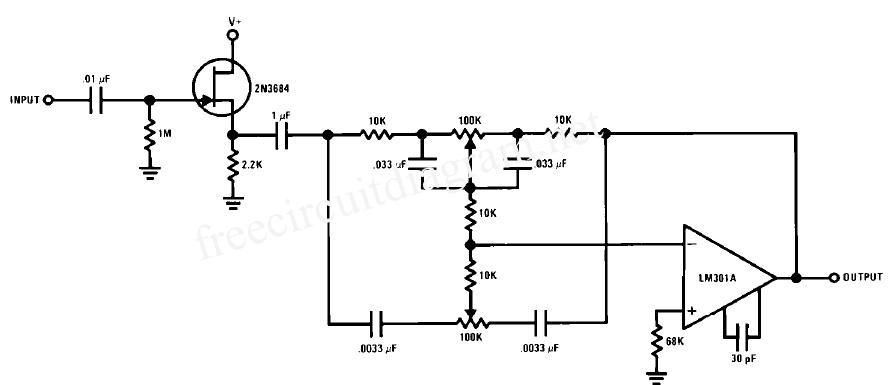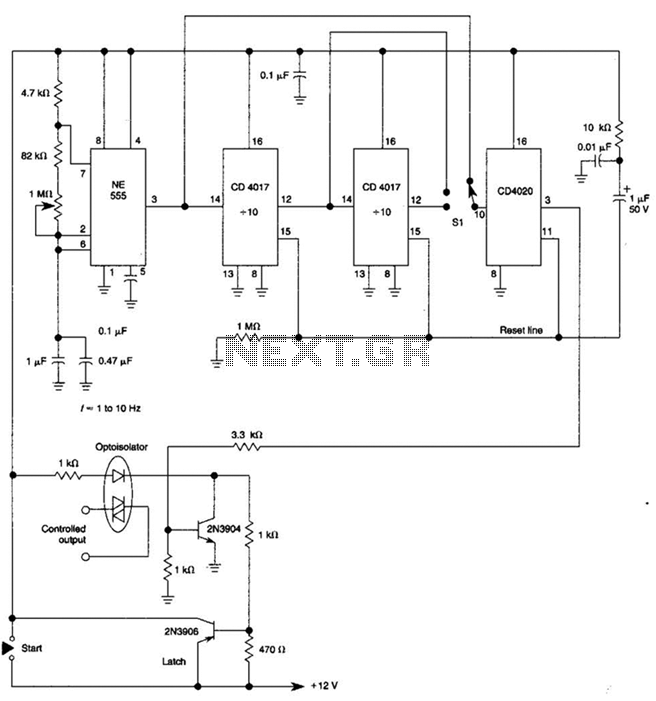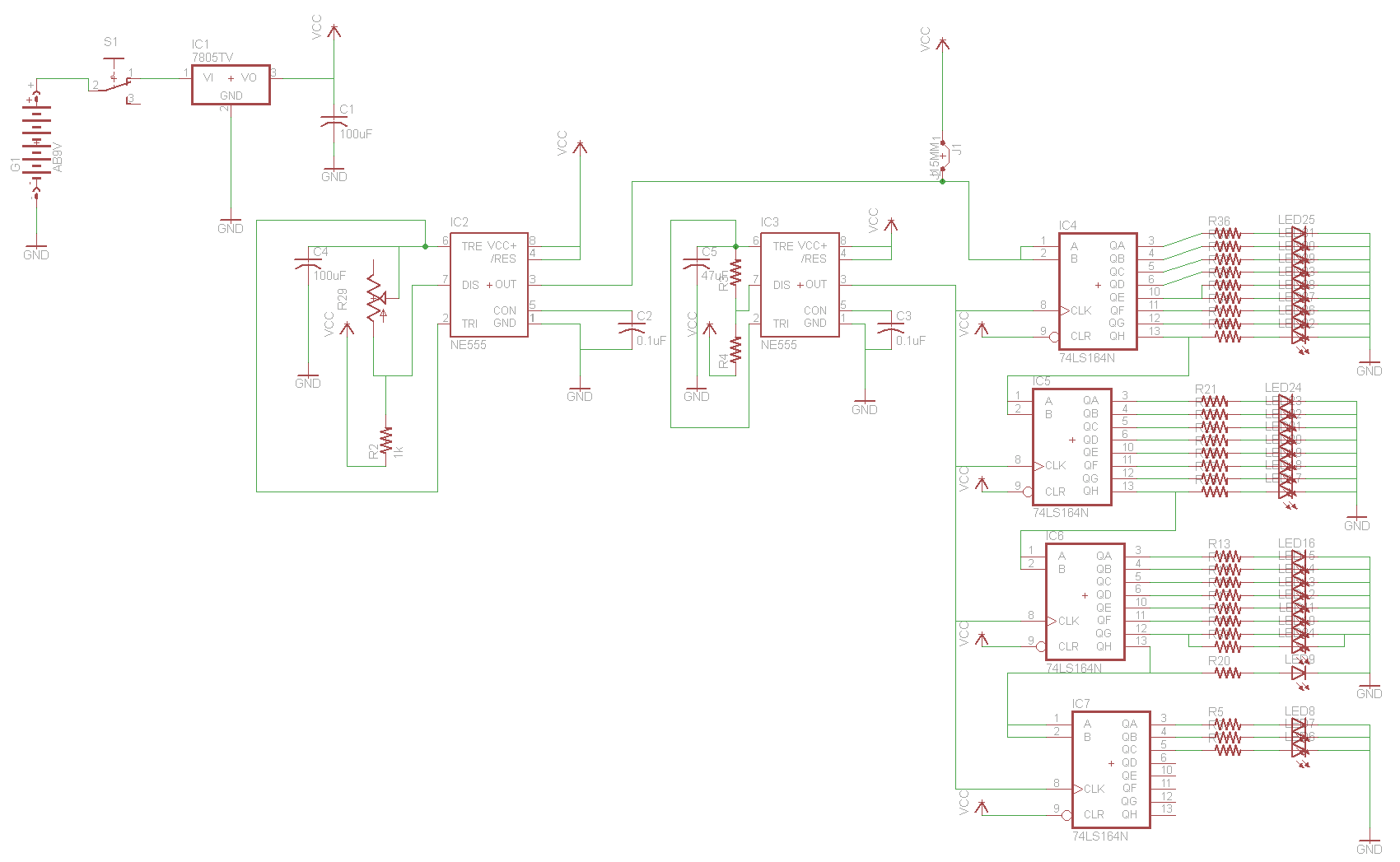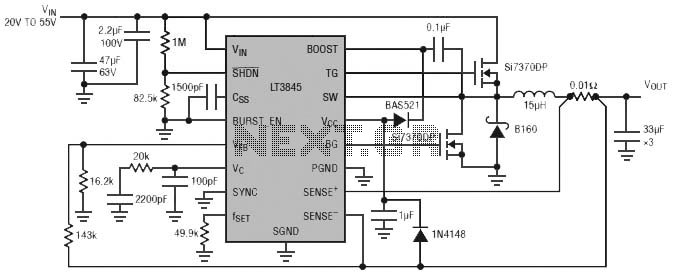
Voltage comparator circuit
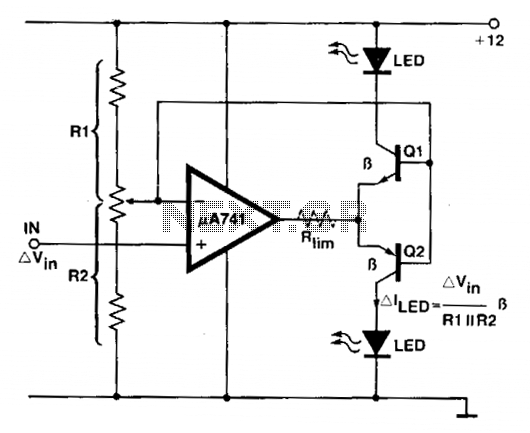
An operational amplifier (op amp) is utilized as a comparator and as a current sink for an LED. The output voltage of the amplifier varies by approximately 1.4 V based on the direction of the current. At any given moment, only one transistor is active. The maximum current flowing through the LED is restricted to 25 mA due to the overcurrent protection feature of the uA741 op amp. If the LEDs cannot handle this current, or if a different op amp is employed, an additional resistor (R) becomes necessary.
The described circuit employs an operational amplifier configured as a comparator to control the current flowing through an LED. The op amp’s output is designed to switch between two states, allowing it to turn on or off the current path to the LED based on the input voltage levels. The output voltage swing of approximately 1.4 V indicates that the op amp can effectively drive the base of a bipolar junction transistor (BJT) or a MOSFET, which acts as a switch to regulate the LED current.
In this configuration, the current through the LED is limited to a maximum of 25 mA, ensuring that the LED operates within safe parameters to prevent thermal damage or reduced lifespan. This limitation is achieved through the inherent overcurrent protection built into the uA741 op amp, which helps prevent excessive current flow under varying conditions.
If the selected LED has a lower current rating, or if a different operational amplifier is used that does not incorporate built-in current limiting, an additional resistor (R) may be necessary. This resistor can be placed in series with the LED to further limit the current, ensuring that the LED operates safely without exceeding its maximum current rating. The value of this resistor can be calculated using Ohm's law, considering the forward voltage drop of the LED and the desired current.
Overall, this circuit design effectively utilizes an op amp for LED control while incorporating safety features to protect the components involved. The careful selection of components and configurations allows for flexibility in the design, accommodating various LED specifications and operational amplifier characteristics.An op amp is used as a comparator and a sink for LED current. The output voltage of the amplifier changes about 1.4 V depending on the direction of the current. Only one transistor is on at any time. Maximum LED current is limited to 25 mA by overcurrent protection of the uA741. If LEDs are not capable of carrying such a current or an alternative op amp is used and an additional resistor R^ is necessary.
The described circuit employs an operational amplifier configured as a comparator to control the current flowing through an LED. The op amp’s output is designed to switch between two states, allowing it to turn on or off the current path to the LED based on the input voltage levels. The output voltage swing of approximately 1.4 V indicates that the op amp can effectively drive the base of a bipolar junction transistor (BJT) or a MOSFET, which acts as a switch to regulate the LED current.
In this configuration, the current through the LED is limited to a maximum of 25 mA, ensuring that the LED operates within safe parameters to prevent thermal damage or reduced lifespan. This limitation is achieved through the inherent overcurrent protection built into the uA741 op amp, which helps prevent excessive current flow under varying conditions.
If the selected LED has a lower current rating, or if a different operational amplifier is used that does not incorporate built-in current limiting, an additional resistor (R) may be necessary. This resistor can be placed in series with the LED to further limit the current, ensuring that the LED operates safely without exceeding its maximum current rating. The value of this resistor can be calculated using Ohm's law, considering the forward voltage drop of the LED and the desired current.
Overall, this circuit design effectively utilizes an op amp for LED control while incorporating safety features to protect the components involved. The careful selection of components and configurations allows for flexibility in the design, accommodating various LED specifications and operational amplifier characteristics.An op amp is used as a comparator and a sink for LED current. The output voltage of the amplifier changes about 1.4 V depending on the direction of the current. Only one transistor is on at any time. Maximum LED current is limited to 25 mA by overcurrent protection of the uA741. If LEDs are not capable of carrying such a current or an alternative op amp is used and an additional resistor R^ is necessary.
